Inside: The ultimate collection of elements of art examples and elements of art definitions, plus helpful resources for teaching the elements of art.
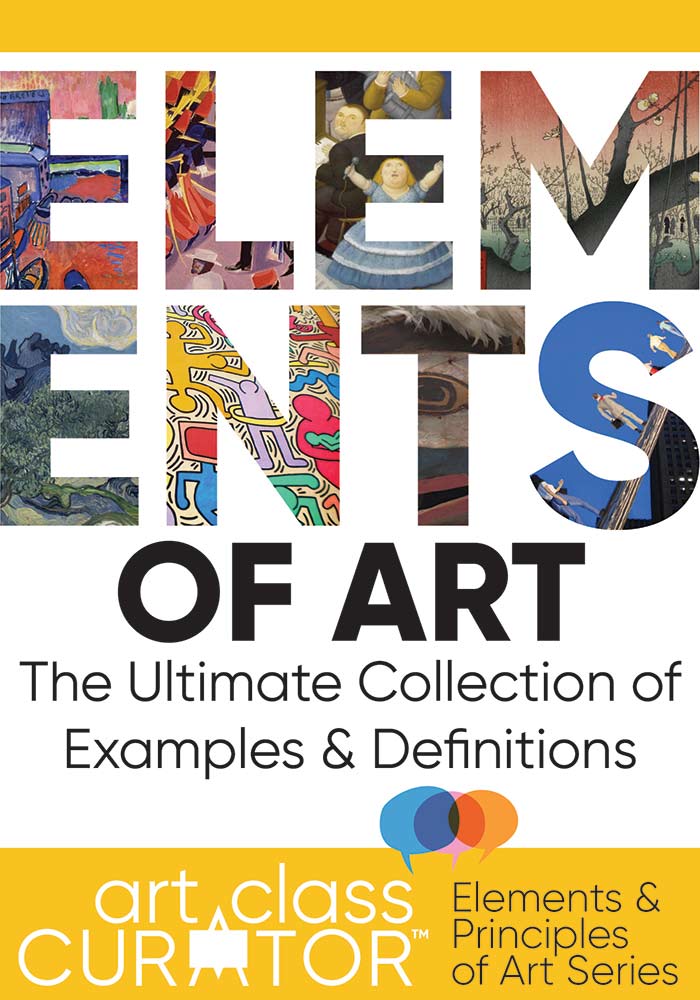
What are the Elements and Principles of Art?
The elements of art and principles of design are the fundamental pieces that make up an artwork. Most works of art will make use of many or all of the elements and principles of art. We often judge art by how effectively the artist used these design fundamentals even before we learn about them.
The elements of art are the building blocks of an artwork: color, line, shape, form, value, texture, and space. They are the tools artists use when creating an artwork.
The principles of design are how those building blocks are arranged: contrast, rhythm, proportion, balance, unity, emphasis, movement, and variety. They are the ways an artist can organize the elements of art to create a wide range of effects.
Each of these art fundamentals are closely related and many of them overlap. When combined, they produce a complete artistic vision.
Why are the Elements and Principles of Art Important?
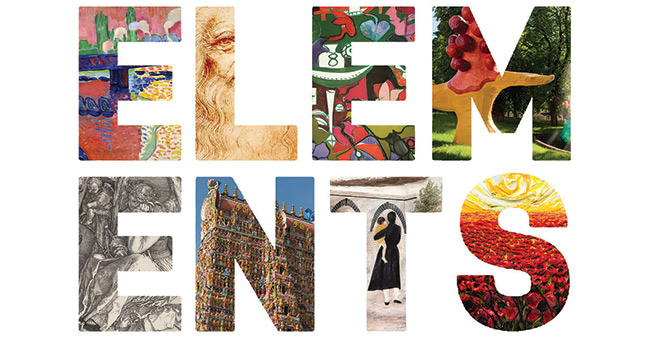
Knowing the elements and principles of art boosts visual literacy. Artists and creators make more powerful works when they utilize the principles of art. When viewers are familiar with the elements of art, they become more aware of the details and can better appreciate what they see and the message behind it.
Connecting with art makes us more empathetic and strengthens the fabric of society. In the age of the internet, understanding how and why advertisers make design decisions can empower students with information and make them less susceptible to manipulation.
Teaching the Elements and Principles of Art
I once said that I hate the elements and principles of art, but that’s not quite accurate. The elements and principles of art are a lens through which to view and understand art, but they are not what makes art education vital. Art inspires higher level thinking, focus, a growth mindset, visual literacy, curiosity, respect, and connection. The elements and principles of design are an artist’s toolbox. Knowing the tools not only improves students’ studio art skills and gives them deeper appreciation when viewing artworks, it helps make them better, more informed citizens and prepares them for a visually complex and culturally interconnected modern world in need of creative problem solvers.
Below you’ll find an explanation of each of the elements and principles of art, including artwork examples and links to helpful materials for teaching the individual concepts.
Please note, this post includes Amazon affiliate links. As an Amazon Associate I earn from qualifying purchases.
Download the Free Elements and Principles Printable Pack
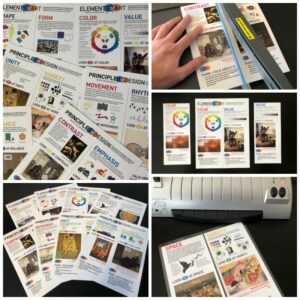
Free Resource!
Elements & Principles Printable Pack
The Elements & Principles of Art are the foundation of every artwork, but teaching them can be a bore. Wake your students up and engage them with full color artworks, easy to understand definitions, and thought-provoking higher level thinking questions. This versatile resource can be hung in the classroom or used as an art manipulative.
This pack of printables was designed to work in a variety of ways in your classroom when teaching the elements and principles of art. You can print and hang in your classroom as posters/anchor charts or you can cut each element and principle of art in its own individual card to use as a lesson manipulative.
Elements of Art Examples and Definitions
Scroll below for each element or click the link to be taken to the appropriate section:
Color
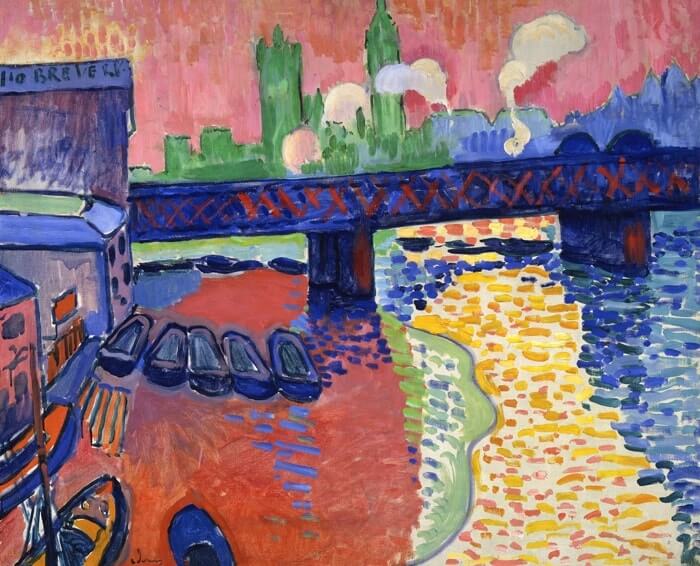
Color is the visual property of the pigment of an object that is detected by the eye and produced as a result of the way the object reflects or emits light. The human eye is capable of seeing millions of colors, making it one of the most diverse and powerful elements of art.
Each color has three properties—hue, value, and intensity. Hue is the name of a color. Value is a color’s lightness or darkness, which is altered when black or white is added. Intensity refers to the intensity of a color, often measured by boldness or dullness.
In this example of color in art, Paul Klee shows contrast between high intensity and low intensity colors by using more or less water with his paint.
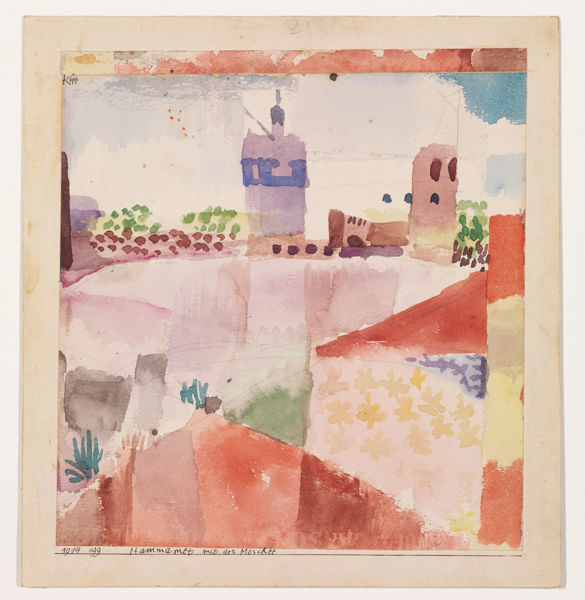
Primary Colors
All colors come from the three primary colors—red, blue, and yellow. You cannot mix any colors to create a primary color. They are the base hues for all other colors.
In this example of primary colors in art, Jacob Lawrence uses only neutral colors with the primary colors of red, blue, and yellow.
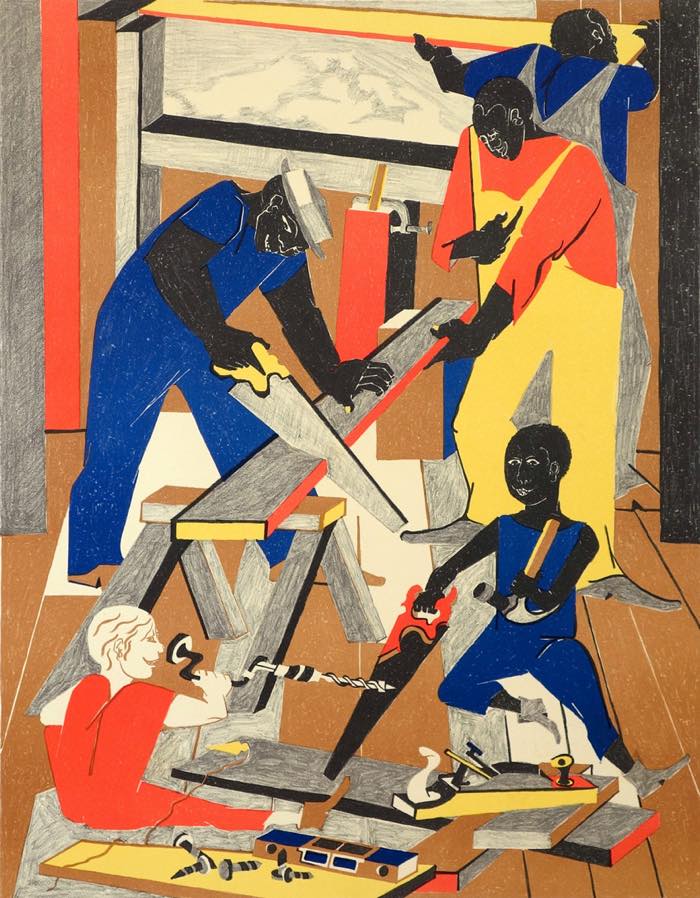
Looking for more examples of primary colors in art? Check out our post of color in art examples and definitions post!
Complementary Colors
To find a pair of complementary colors, simply draw a line from one of the color wheel to the other. Complementary colors are called that because, when placed side by side, they are pleasing to the eye. They create an appealing contrast in artworks. Some of the basic complementary color pairings are red and green, purple and yellow, and orange and blue.
In this example of complementary colors in art, Hiroshige uses red and green to create contrast.
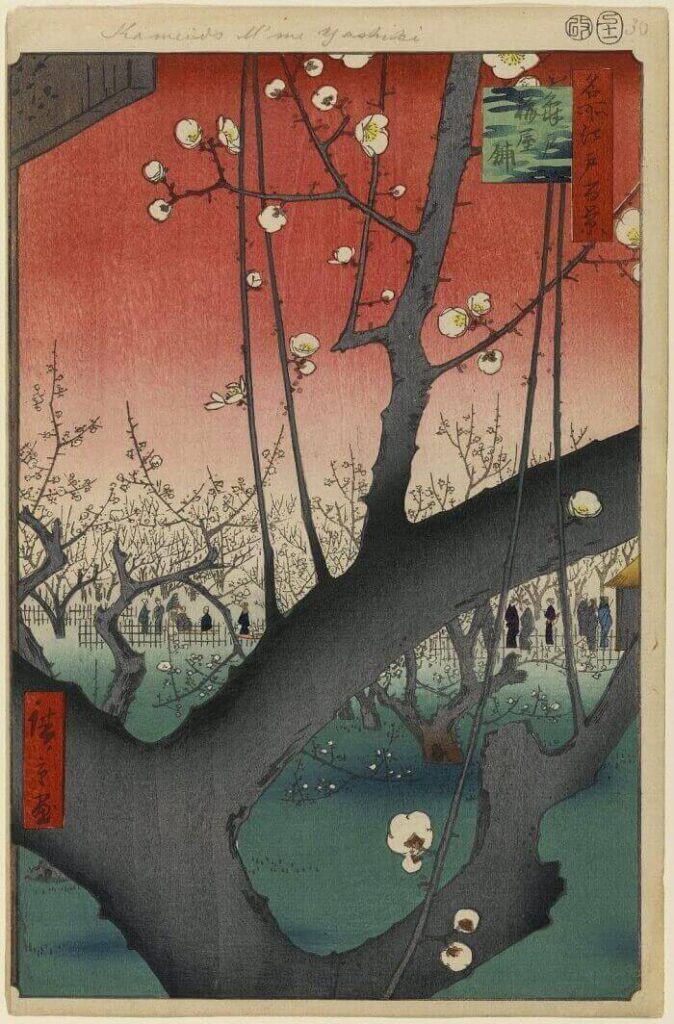
For more examples of complementary colors in art, check out the full color in art examples post!
Analogous Colors
To find a pair of analogous colors, simply choose two colors that are touching on the color wheel. Analogous colors create harmony and unity in art because they are made of the same hues. Some of the basic analogous color pairings are blue and green, red and orange, and yellow and green.
In this example of analogous colors in art, Vincent van Gogh uses colors next to one another on the color wheel–blue, green, and yellow.
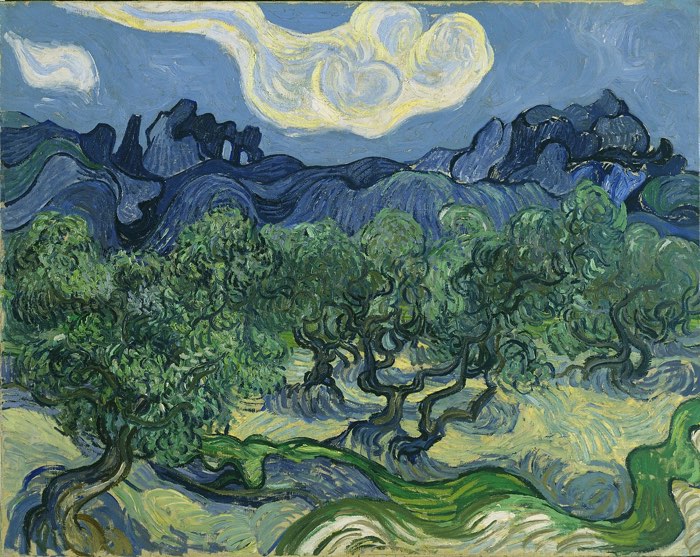
Looking for more examples of analogous colors in art? Check out the Color in Art: Examples & Definitions post!
Warm and Cool Colors
Warm colors are reds, oranges, and yellows. They pop out towards viewer, and create energy and excitement in an artwork. On the other hand, the cool colors of blues, greens, and violets recede from the viewer’s eye and create a calming effect.
In this example of warm and cool colors in art, Dorothea Tanning contrasts warm with cool colors to show the clash of rest and restlessness in insomnia.
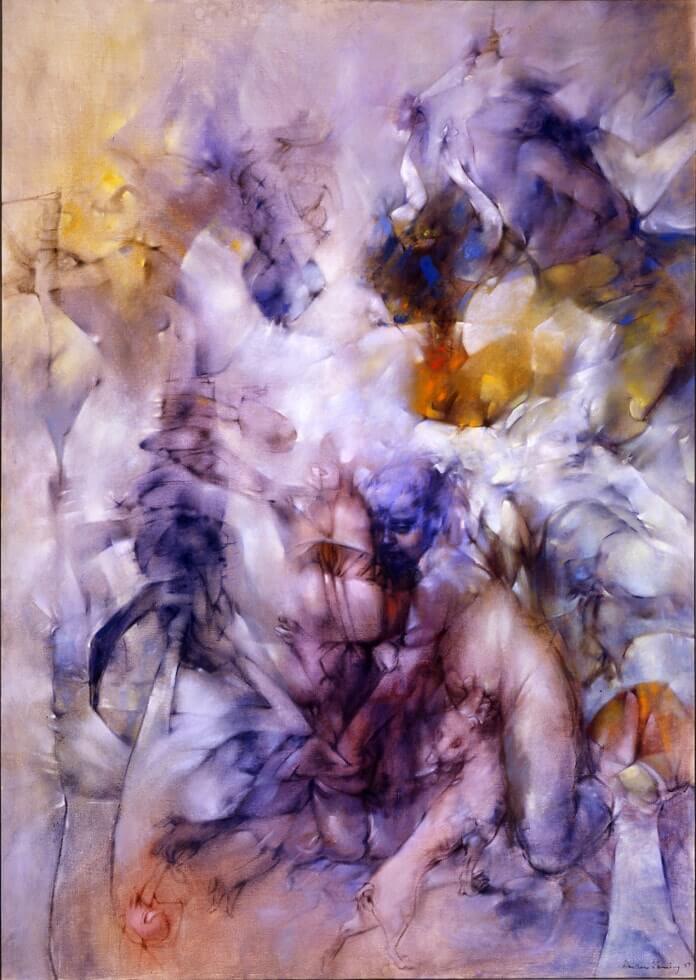
For more examples of warm and cool colors in art, check out the full color post!
Color in Art Resources
- The Ultimate Collection of Color in Art: Examples & Definitions
- Color in Art Lesson
- I Spy Colors in Art (Book)
- Vincent’s Colors (Book)
- My Many Colored Days (Book)
- The Virtual Instructor: Color Theory
- Arty Factory: Color
Art Class Curator has a full color wheel lesson available in the Curated Connections Library including all of following color wheel topics: primary, secondary, intermediary/tertiary colors, analogous colors, complementary colors, monochromatic colors (tints/shades), cool/warm colors, and mood.
Line
Line is an element of art defined as the path of a point moving through space. There are many types of line in art. Lines may be continuous or broken, and can be any width or texture. The great variety of line types make them an especially useful tool in artworks.
Direction of Line
The direction of a line can dramatically alter an artwork. Diagonal lines create movement an energy. Horizontal and vertical lines add stability and strength to an artwork.
In this example of directional lines in art, Artemisia Gentileschi uses both diagonal lines to show the energy and excitement of the scene and vertical lines (in Judith’s attendant) to show strength.
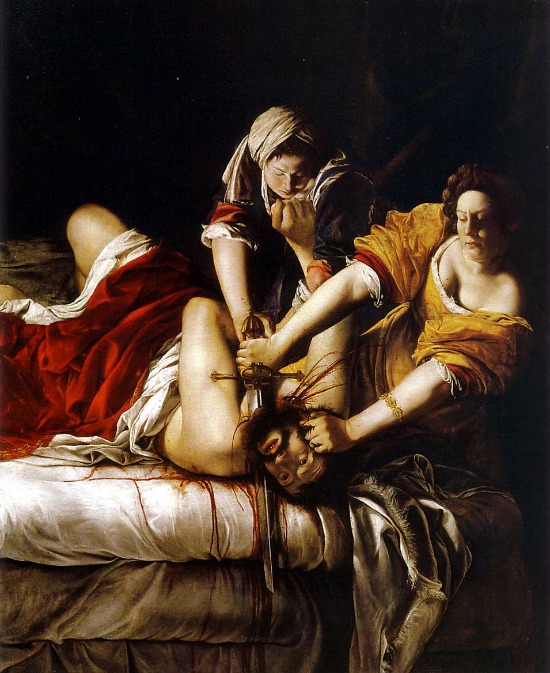
Looking for more examples of directional lines in art? Check out this post about line!
Contour Lines
Contour lines form the outside edge of a three-dimensional shape and clearly defines the area it occupies.
Look at the face of Leonardo da Vinci below; the contour lines around his facial features give his face form.
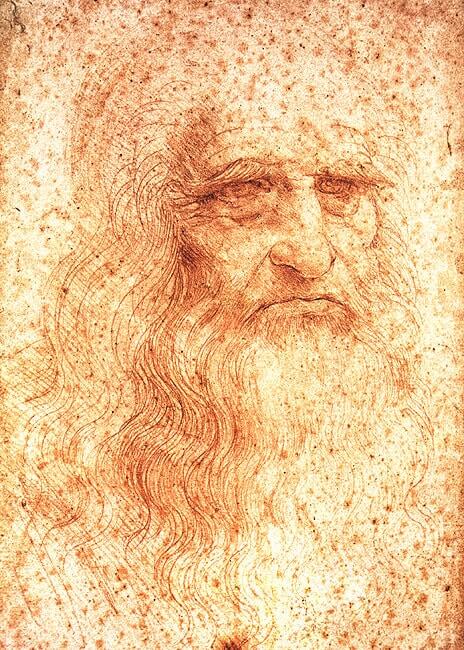
Looking for more examples of contour lines in art? Check out the Artworks That Show Line post!
Gesture Lines
Gesture lines are lines that show movement, particularly of characters in an artwork.
In this example of gesture lines in art, Marino Marini uses big swooshing gesture lines that capture the action and energy of the subject.
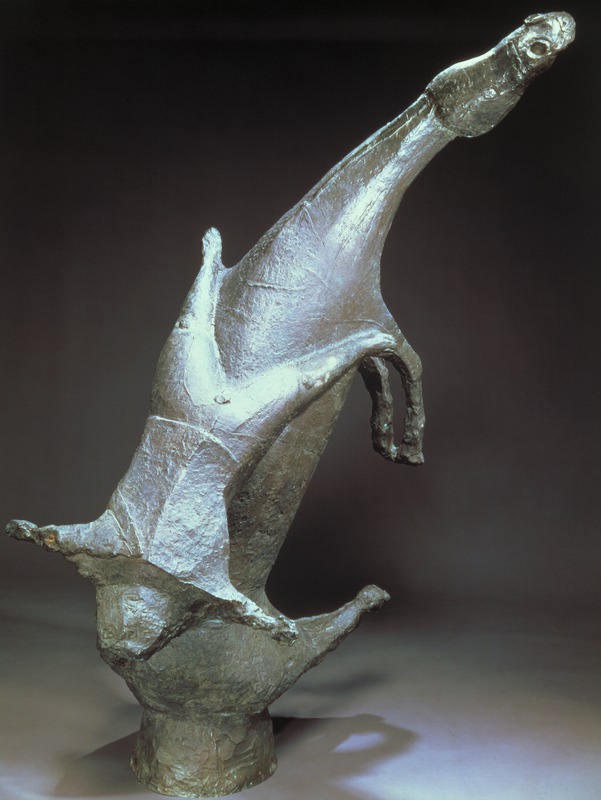
Looking for more examples of gesture lines in art? Check out this post of types of line in art!
Implied Lines
Implied lines are not made by a physical mark in an artwork, but rather by visual suggestion. Our eyes often follow them automatically, so they draw attention to specific parts of an artwork.
In this example of implied lines in art, Grant Wood uses implied lines to emphasize the hatchet in the center. Follow the implied lines from the ladder to the father’s hand to George Washington’s hand to the hatchet. The narrator’s hand leads to an implied line as well.
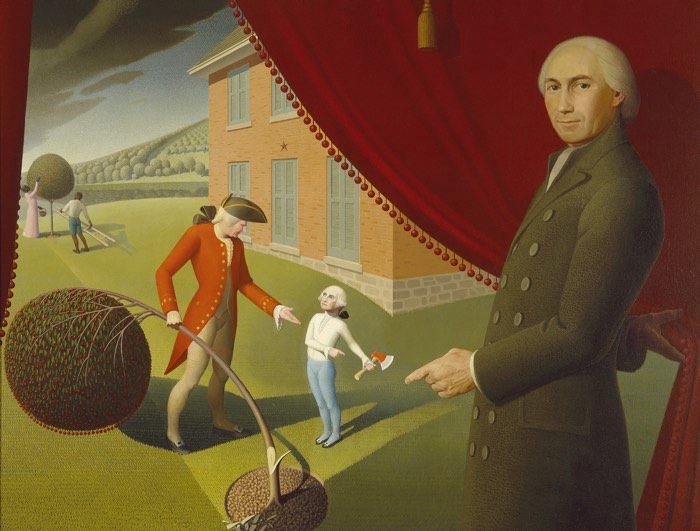
Looking for more examples of implied lines in art? Check out our elements of art line post!
Expressive Lines
Lines that show feeling and emotion are called expressive lines.
In this example of expressive lines in art, Edvard Munch uses wavy lines in contrast with a strong straight diagonal line to convey anxiety.
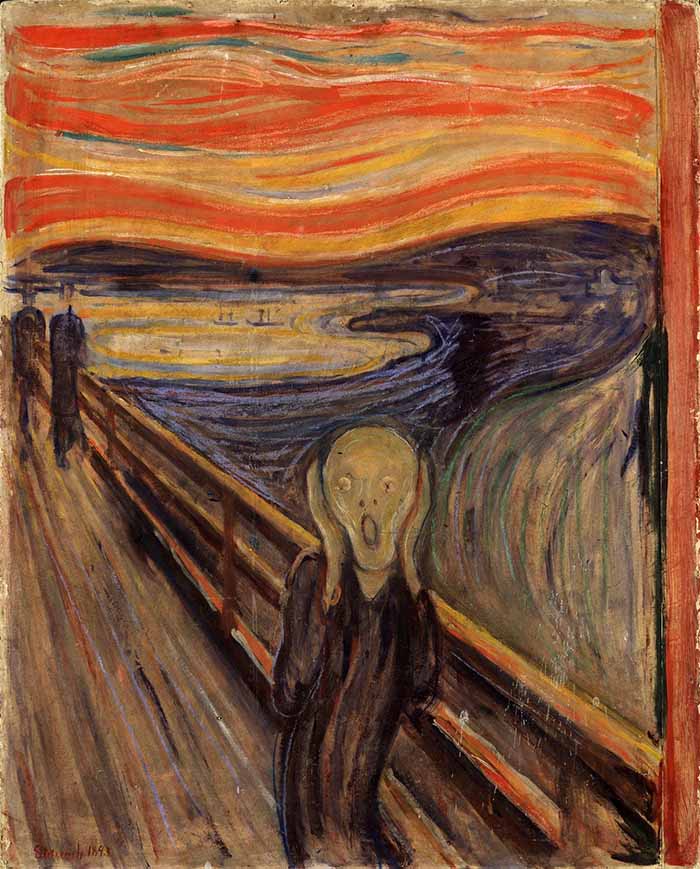
Looking for more examples of expressive lines in art? Check out the Artworks That Show Line post!
Line in Art Resources
- The Ultimate Collection of Line in Art
- The Art of an Idea: Math and Art Integration with Sol Lewitt’s Instruction
- Arty Factory: Line
Art Class Curator has a full line lesson available in the Curated Connections Library including all of following line topics: contour lines, gesture lines, implied lines, expressive lines, lines in architecture, and characteristics of line.
Shape
A shape is an enclosed area of space created through lines or other elements of the composition.
Geometric Shapes
Geometric shapes are precise areas that can be made using a ruler or compass. These shapes can be simple or complex and generally give an artwork a sense of order.
In this example of geometric shapes in art, Picasso uses circles, triangles, crescents, and rectangles.
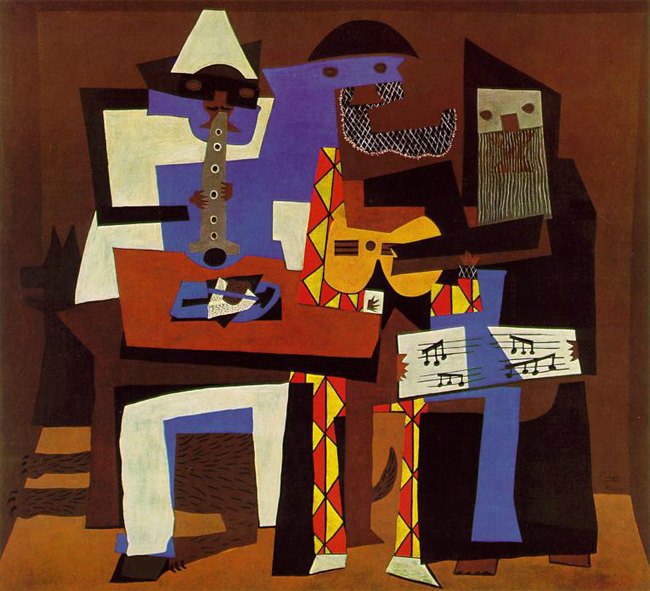
Looking for more examples of geometric shapes in art? Check out the Artworks That Use Shape post!
Organic/Free-Form Shapes
Organic shapes are complex and imprecise. They give works of art a natural feeling.
In this artwork, Grace Hartigan uses a variety of examples of organic and free-form shapes.
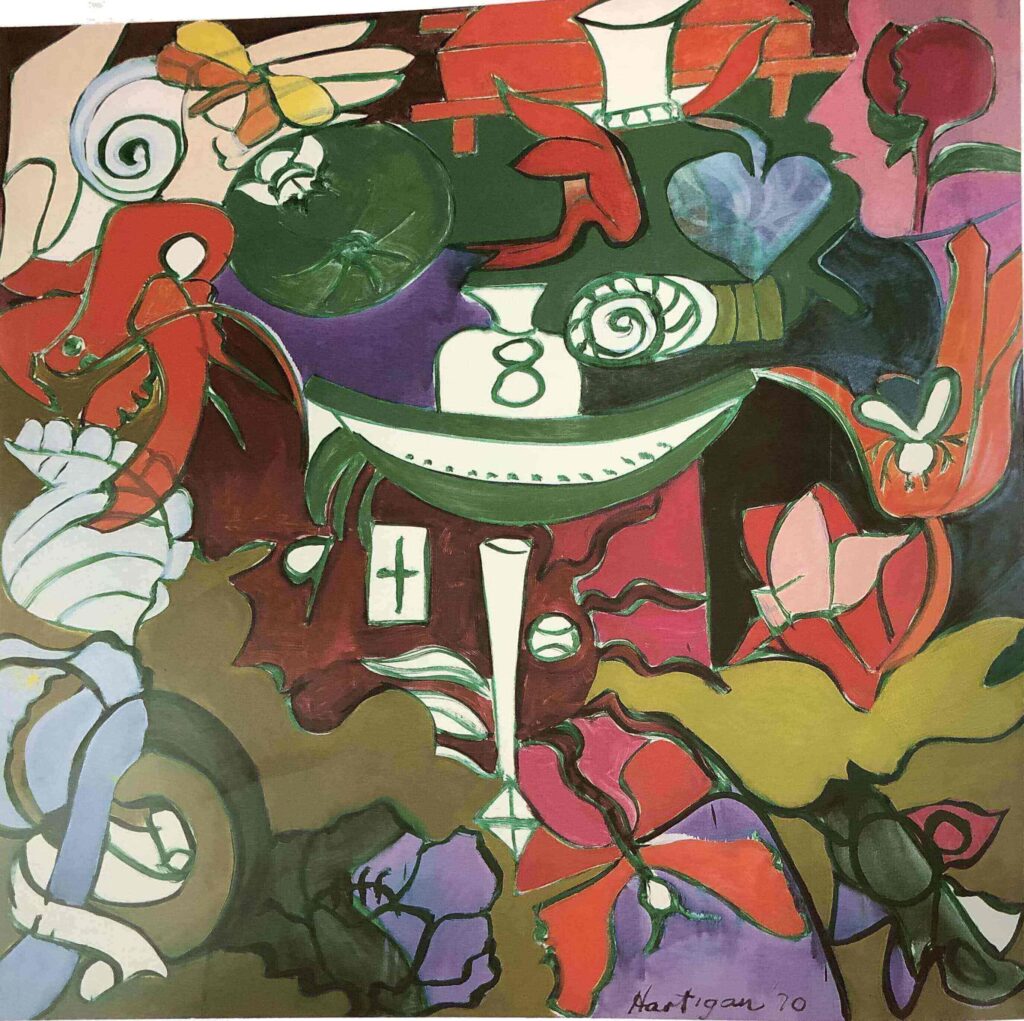
Looking for more examples of organic shapes in art in art? Check out this list of art using shape!
Shape in Art Resources
- The Ultimate Collection of Shape in Art
- Paper Sculpture Project Inspired by Geometric MADI Art
- When a Line Bends . . . A Shape Begins (Book)
- I Spy Shapes in Art (Book)
- Arty Factory: Shape
Form
Form is an element of art closely related to shape. Like shape, form can be geometric or organic. However, unlike shape, form is always three-dimensional. A form is measurable by length, width, and height, and encloses volume. Forms can be well-defined, such as a cube, or they can be free-form, such as an animal. They can be created by combining two or more shapes and are often defined by the presence of shadow and how light plays against it in an artwork.
In this examples of form in art, Dalí uses geometric forms (spheres) to create his image.
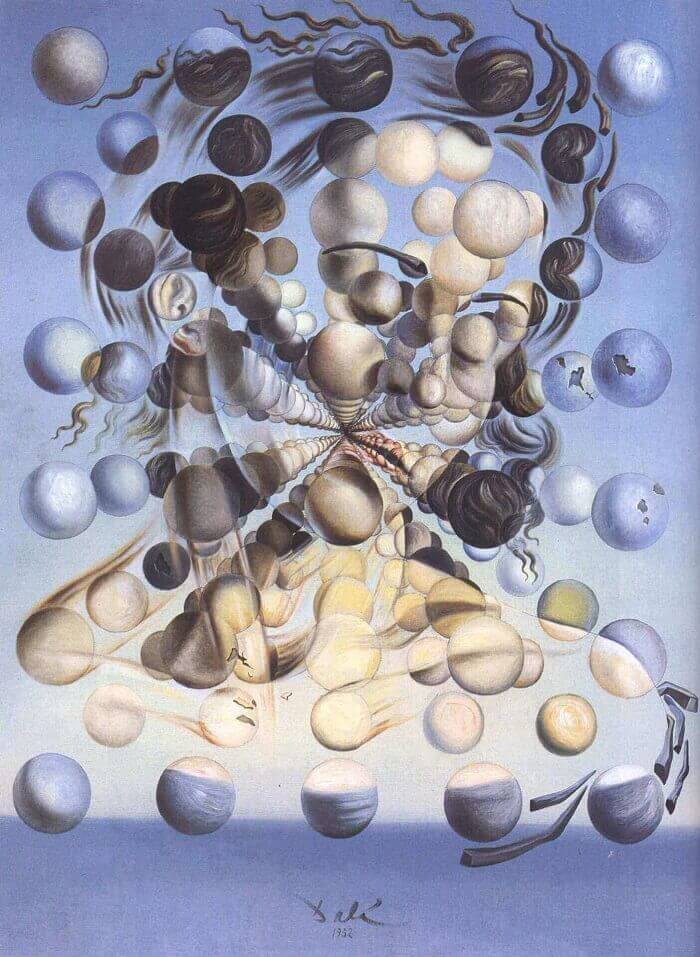
In this example of form in art, Niki de Saint Phalle uses organic form.
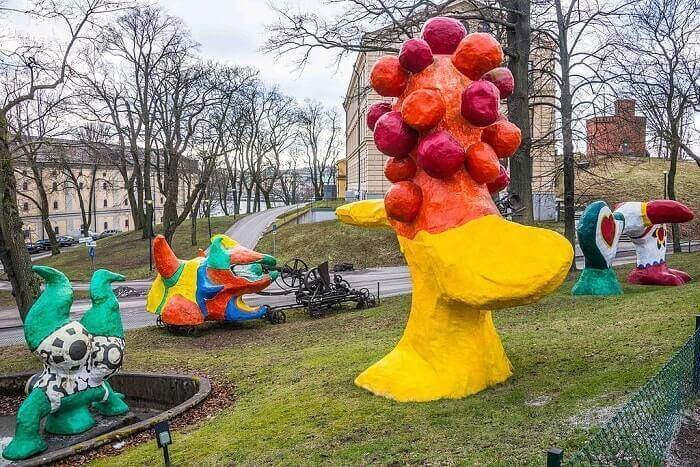
Form in Art Resources
- The Virtual Instructor: Form
- Set Free the Angels: How Carved Sculptures Are Made
- National Gallery of Art: Form (3rd-4th Grade Lesson)
Value
Value in art refers to the lightness and darkness of colors and is often described in varying levels of contrast. White is the lightest value while black is the darkest. To create a tint of a color, the artist adds white. To create a shade, the artist adds black.
In this example of value in art, Rufino Tamayo adds white to a color to create a tint in the clothes of the women, one of the baskets, and in the checkerboard on the wall.
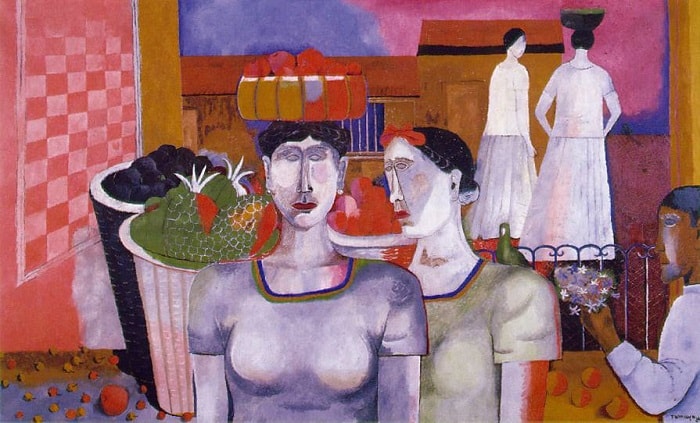
In this example of value in art, Dürer creates a wide range of values using the shading techniques of hatching, cross-hatching, and stippling.
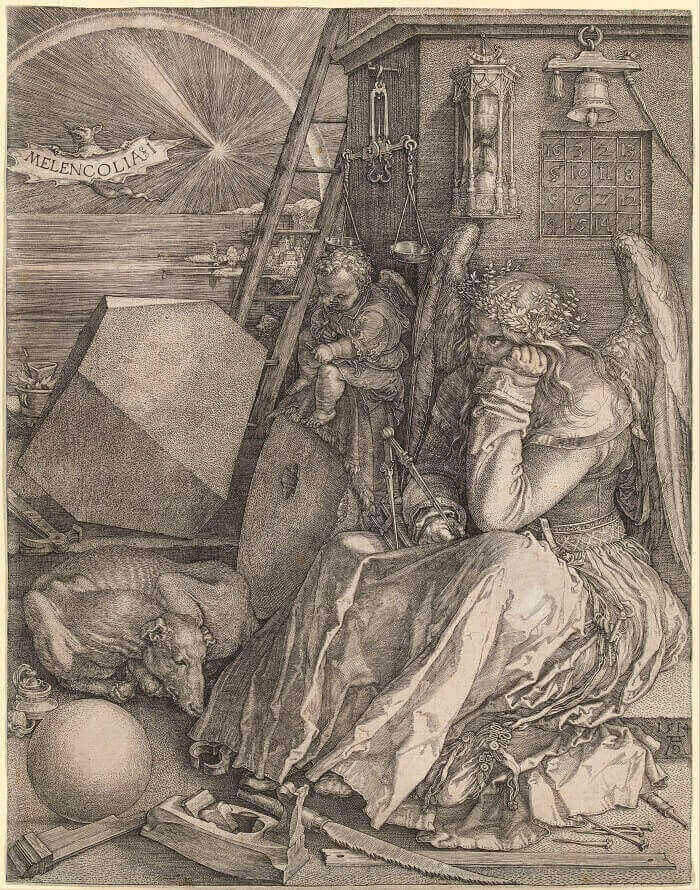
Value in Art Resources
- Drawing Dimension – Shading Techniques (Book)
- The Virtual Instructor: Value
- NY Times: Four Ways to Think about Value
Texture
Texture refers to the tactile qualities of a surface. This element of art deals with the way objects feel or the way it looks like they would feel.
Tactile or Actual Texture
Tactile texture is the actual feeling of a surface that can be touched. Think of the actual texture of a sculpture or a painting created with the impasto technique.
In this example of tactile or actual texture in sculpture, Meret Oppenheim uses actual fur to cover the saucer, cup, and spoon.
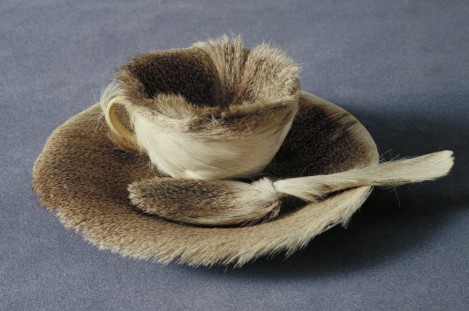
Impasto is the technique of applying paint very thickly to the surface. In this closeup of Water Lily Pond, you can see Monet’s thick application of paint to create actual/tactile texture.
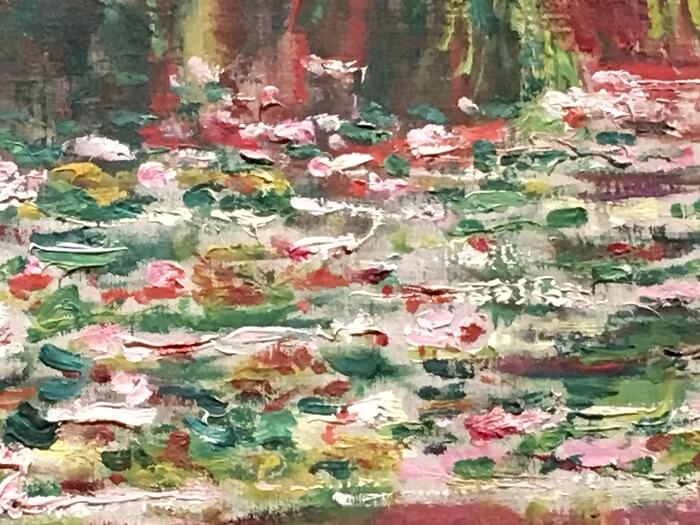
Looking for more elements of art examples of tactile texture in art? Check out the Texture in Art Examples post!
Visual Texture
Visual texture is the illusion of texture in an artwork. Think of a photograph of a forest. The texture of the trees and leaves is seen, but the photograph remains smooth.
Albrecht Dürer mimics creates the visual texture of thick fur in his painting of Hieronymus Holzschuher, but the actual texture is that of oil paint.
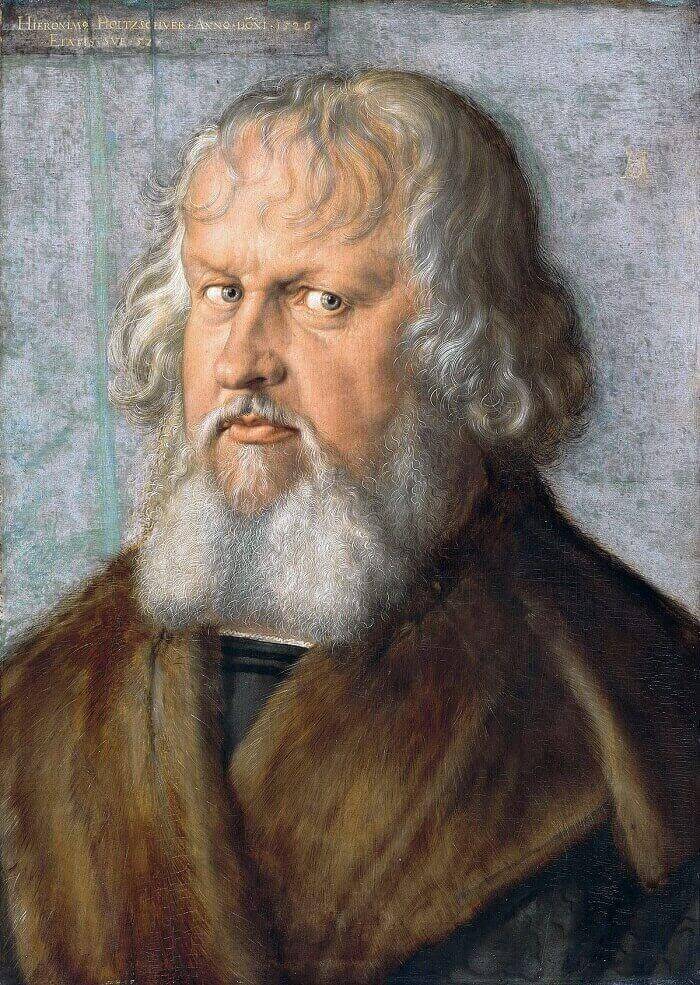
For more examples of visual texture in art, check out our post of texture in art examples!
Texture in Art Resources
- The Ultimate Collection of Texture in Art Examples
- Sophia: Texture
- Arty Factory: Texture
- Rodin’s The Burghers of Calais
Space
Space is the element of art that is concerned with how an artwork depicts depth. It is how artists make a two-dimensional surface look three-dimensional. Space can give the illusion of objects in an artwork being close, far away, or overlapping one another.
In this example of space in art, John Sloan uses overlapping, foreshortening, relative size, perspective, and more. For more information about this painting and how artists depict space, check out this blog post about the artwork.
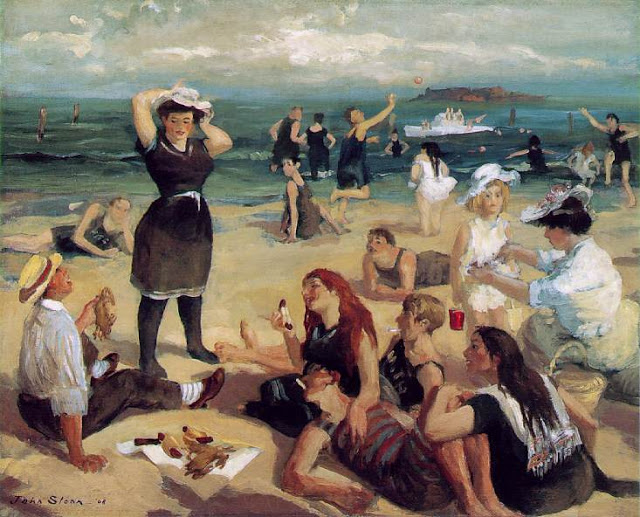
Linear Perspective
Linear perspective is the mathematical system by which an artist uses lines to create the illusion of deep, three-dimensional space on a two-dimensional surface.
Piero della Francesca was one of the forerunners of linear perspective. In Ideal City, he used one-point linear perspective to show the depth of the space.

Looking for more examples of linear perspective in art? Check out the Artworks That Show Space post!
Atmospheric Perspective
Atmospheric perspective, sometimes called aerial perspective, refers to how objects that are far away often appear fuzzier or less detailed than objects that are close due to the contrast between light and dark being increasingly reduced by the effects of atmosphere. Artists use value and shading to mimic atmospheric perspective and give their artworks a realistic appearance.
In this example of atmospheric perspective in art, the trees and mountains in the background are fuzzier and less detailed than the items in the foreground.
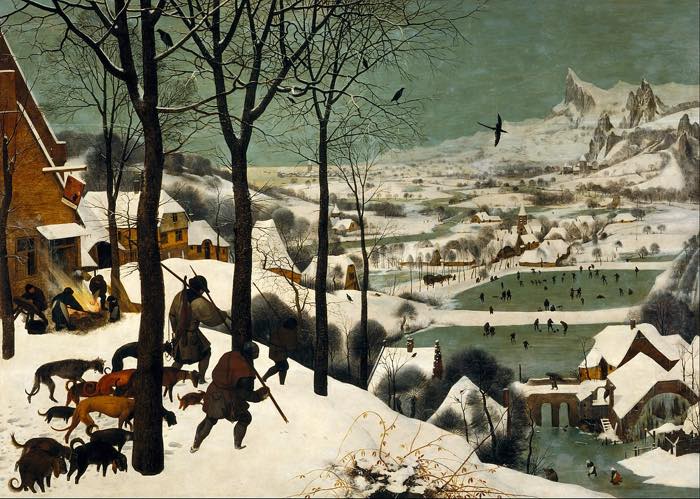
Looking for more examples of atmospheric perspective in art? Check out this list of space in art examples!
Positive and Negative Space
In addition to space being a way to show depth, artists also use positive and negative space as elements of art. Positive space is the areas of the artwork filled with the content, and negative space is the space in between.
In Rodin’s The Cathedral, the empty negative space between the hands creates as much emotion and power as the positive space of the hands.
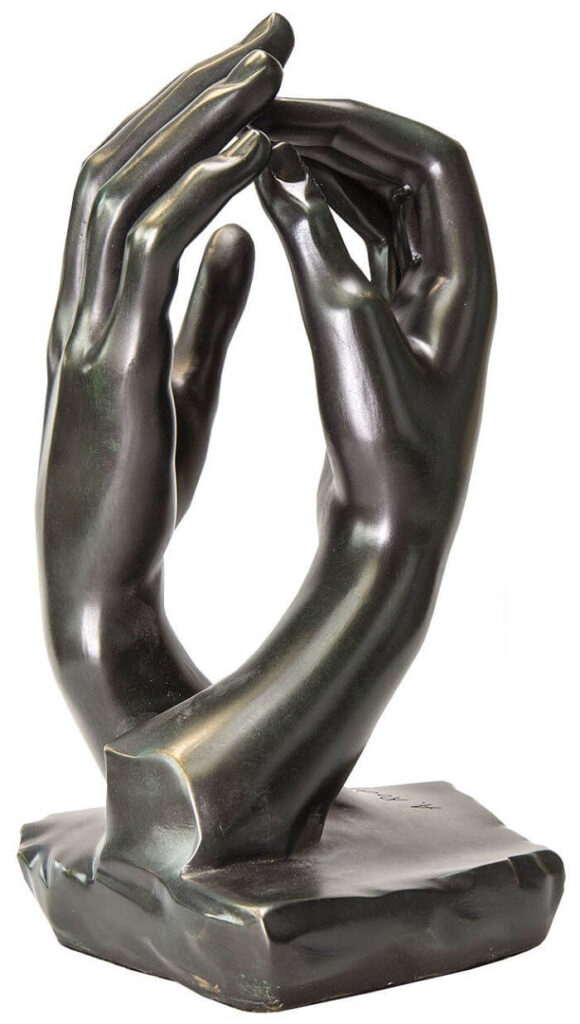
For more examples of positive and negative space in art, check out our elements of art space post.
Space in Art Resources
- The Ultimate Collection of Space in Art Examples
- How Artists Depict Space
- Perspective Made Easy (Book)
- Sophia: Space
- NY Times: 5 Ways to Think About Space
Download the Free Elements and Principles Printable Pack
This pack of printables was designed to work in a variety of ways in your classroom when teaching the elements and principles of art. You can print and hang in your classroom as posters/anchor charts or you can cut each element and principle of art in its own individual card to use as a lesson manipulative.
More Elements of Art Examples
For more examples of elements and principles of art, check out more from our elements of art examples series below.
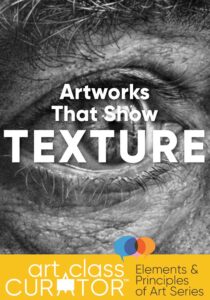
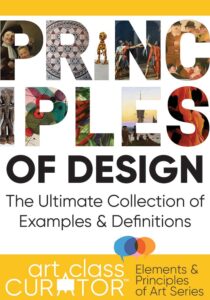
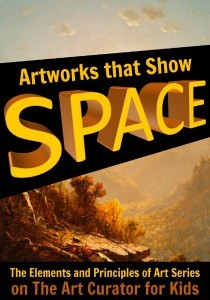
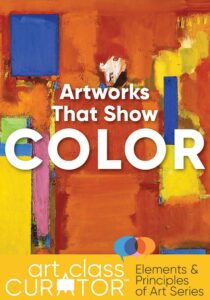
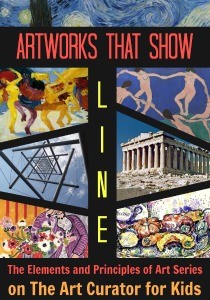
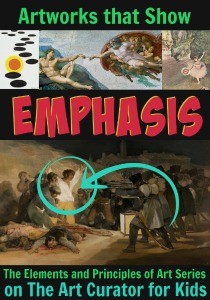
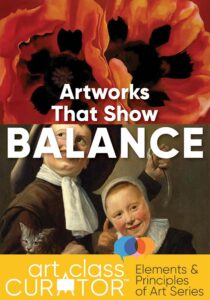
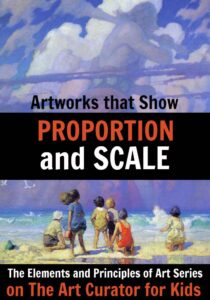
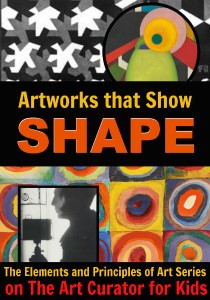
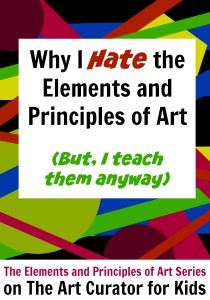
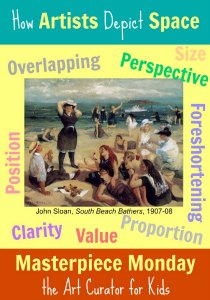
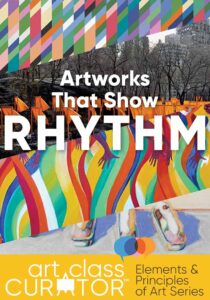

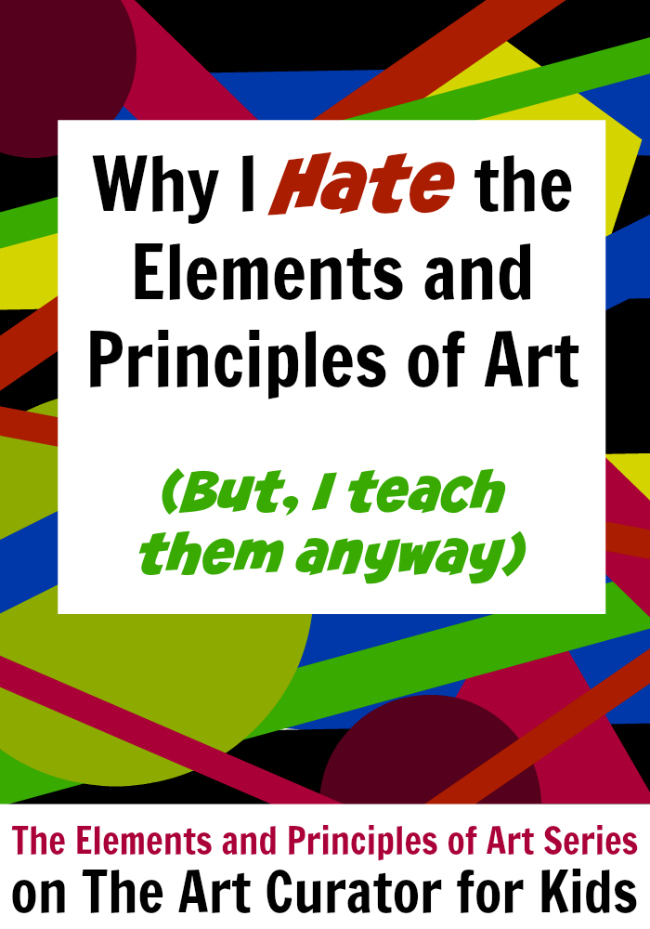
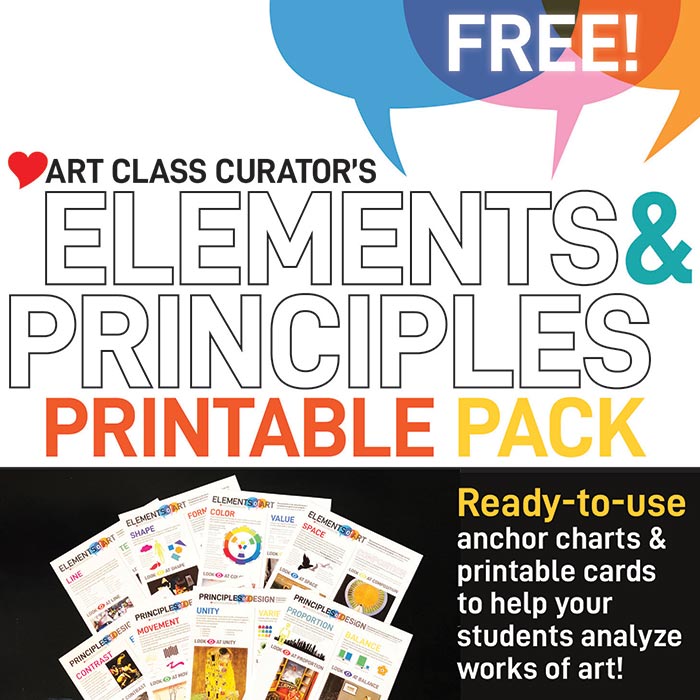

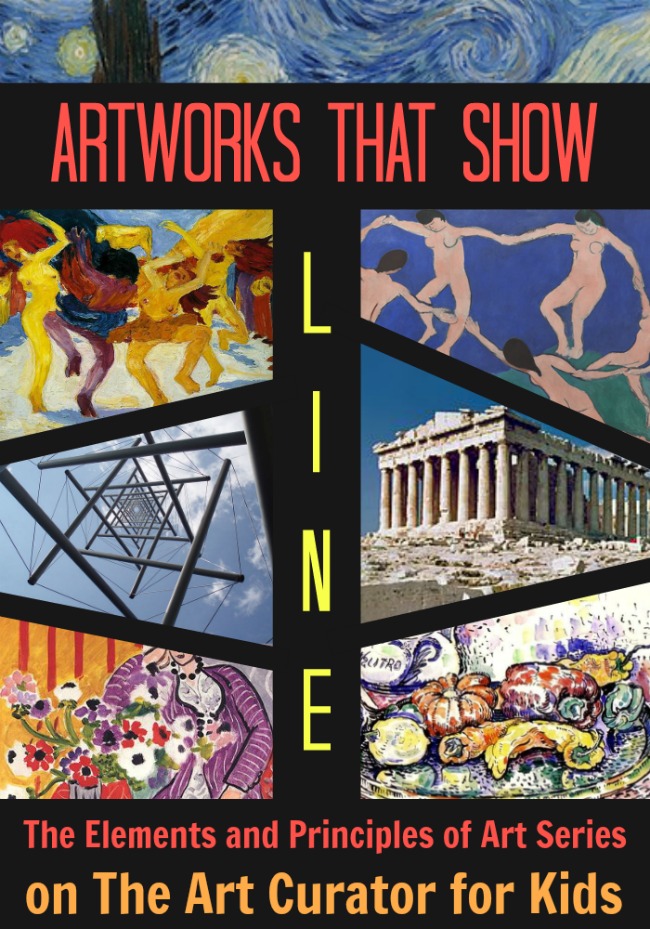
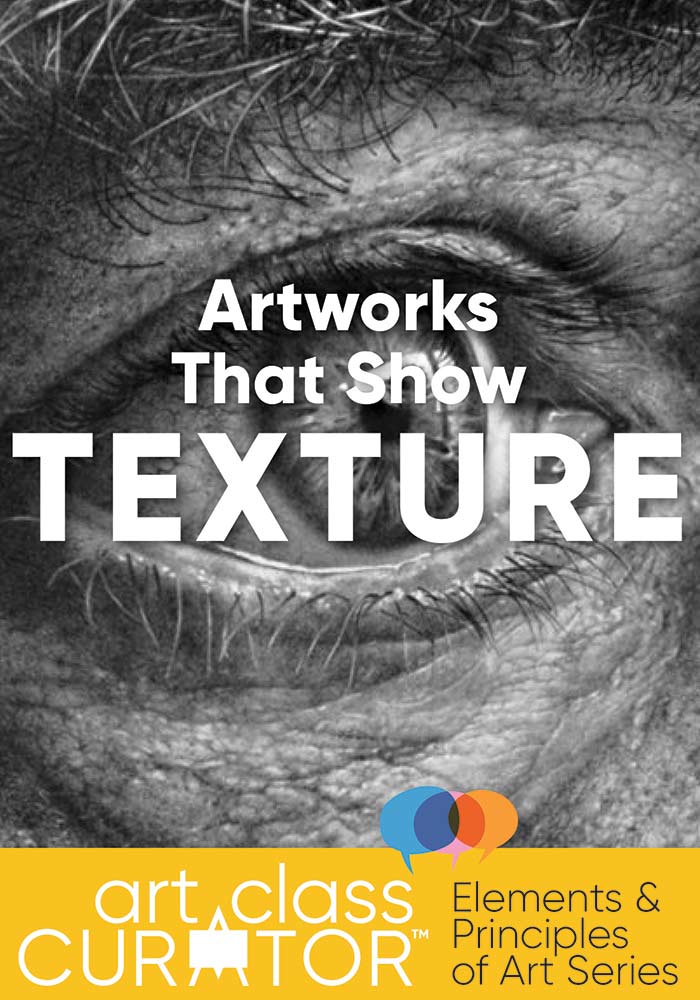
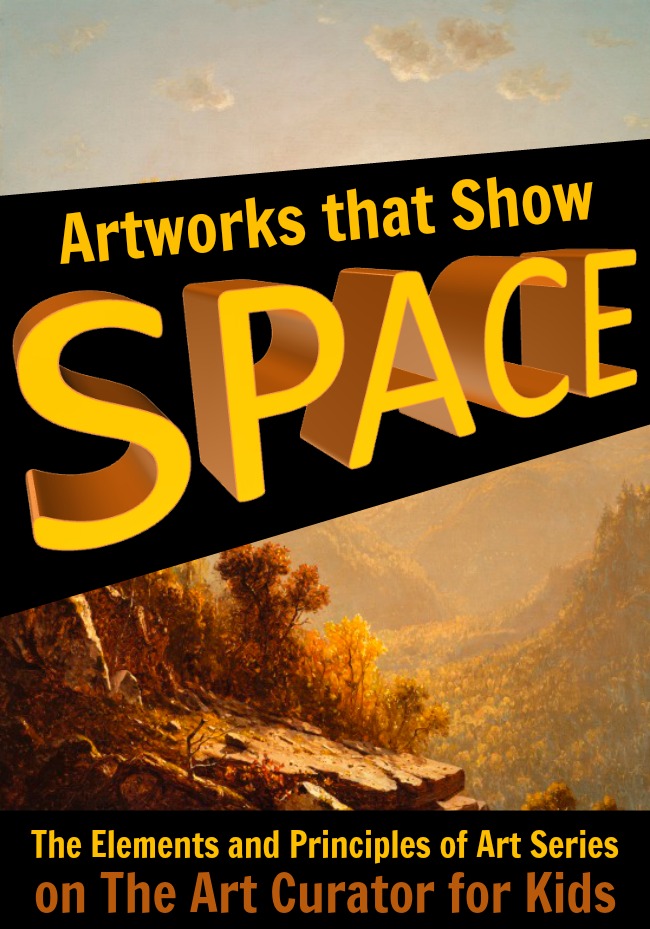
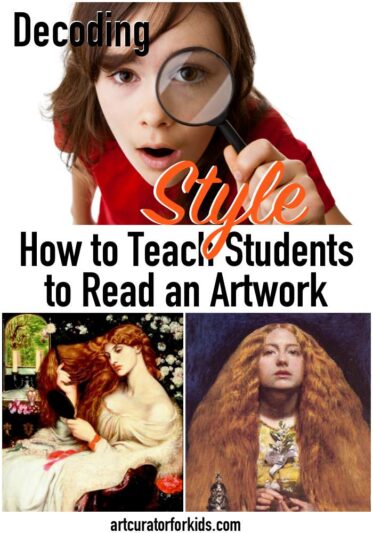
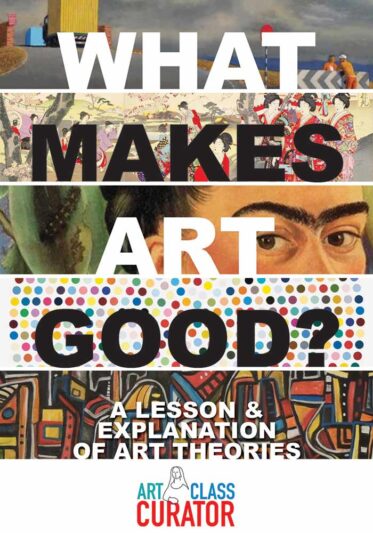


Terrific resources!!!!
Cindy, This information is really helpful. Concise yet very informative. Thanks
I love you!
Hi Cindy, I love your website! My daughter does HL Art (so challenging!) and as a parent I understand so much more about what she needs to achieve, thanks to your resources. Well done!!
I just started poking around on your website today, and multiple places it mentions “download the free resource.” But there is either nowhere to download it, or a button you click on that only brings up a box that says free resource and gives info, but nothing to click on to download? I saw this on multiple pages.
Hi Stephanie! Are you on a school computer? Sometimes they block our downloads.
I had the same problem and I am not on a school computer. Excellent website and resources by the way. Thank you so much!
You’re welcome! If you have any troubles downloading something, you can email us at support@artclasscurator.com and we will send it to you.
This website was an enormous help to me not only to appreciate the different elements of art, but also to see how they’re applied in the different artworks depicted. I really enjoyed learning more about the pieces depicted as well as how the elements allow the artist to convey the thoughts, feelings, movement, or perspective that they desire. Thank you for this wonderful, well organized, clear, and informative website! Awesome!
You’re welcome!
Thank you
Your resources are wonderful and very educational. It really focus on how to teach visual arts with goal in mind in a fun way.
You’re welcome!
This is super amazing 🙂 Love this so much